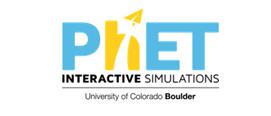Formulae and Equations
Students learn how to deduce the formulae of ionic and covalent compounds in their study of ionic and covalent bonding but seem to rarely transfer the skill here, and in any case drawing dot and cross diagrams to deduce formulae is a time consuming process, so alternative strategies are necessary.
Once the skills have been modelled and learned the key to proficiency is repeated practice and it is a good idea to encourage students to write a full chemical equation for any reaction that they subsequently encounter.
A key area of confusion for students lies in understanding the difference between numbers in the formulae of a compound and the stoichiometry numbers in the equation, and students will often want to balance an equation by changing the former to make the accounting process work, for example by changing O2 to O when balancing the symbol equation H2 + O2 = H2O.
Another source of confusion is that students will often feel that moles are conserved and have tremendous difficulty understanding that the correct balancing for the above is:
2H2 + O2 = 2H2O
because they expect the numbers of moles on either side to be equal. Again, this is a misconception that even able students sometimes carry through to their A level studies and becomes a particular issue in the quantitative chemistry that follows.
Whilst this list provides a source of information and ideas for experimental work, it is important to note that recommendations can date very quickly. Do NOT follow suggestions which conflict with current advice from CLEAPSS, SSERC or other recent safety guides. eLibrary users are responsible for ensuring that any activity, including practical work, which they carry out is consistent with current regulations related to Health and Safety and that they carry an appropriate risk assessment. Further information is provided in our Health and Safety guidance
Balancing Chemical Equations
An engaging interactive resource that helps students to visualise the difficult concept of balancing equations. Students are given an equation and can add molecules to each side to practise balancing. The interactive game is accompanied by teacher notes with suggested activities.
Reactants Products and Leftovers
A great interactive game that allows students to practise adding reactants to one side of the equation and seeing the effect on the products. There is a starting game using sandwiches instead of chemicals which is a great introduction.
Molecules of Life
A series of games on the carbon cycle, drawing molecules, building molecules and chemical top trumps. These are really fun games that encourage problem solving and are accompanied by explainer videos aimed at the teacher delivering the activity.
Ionic Formulae 1 Gridlocks
A sudoku type activity in which students have use their problem solving skills to fill a grid with information about ionic formulae. There are several puzzles of increasing complexity.
Ionic Formulae 2 Gridlocks
A sudoku type activity in which students have use their problem solving skills to fill a grid with information about ionic formulae. There are several puzzles of increasing complexity.


